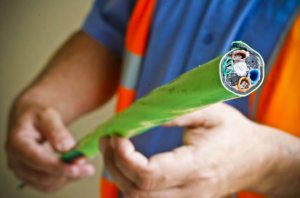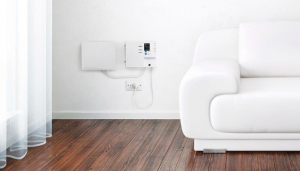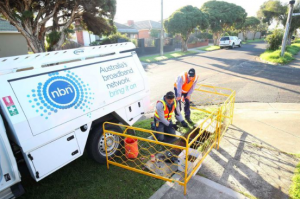NBN service classes explained
Figuring out what internet bundle to get from your service provider can seem like a daunting task if you’re not tech savvy. We’ve put together a mini crash course on NBN service classes to help you navigate connecting your home.

What is NBN?
NBN is Australia’s relatively new broadband network being rolled out across the country. In different areas, there are different stages of infrastructure in place, which means that the NBN network will be set up in slightly depending on where you are. The term “service class” refers to which stage of setup NBN is at for a given area. As the setup progresses in an area, so will the service class. Depending on which type of NBN service class you have, you may be able to access different NBN internet offers from your utility provider. For example, some of the faster speed NBN offers require you to have FTTP, FTTB, FTTC etc.
How do I know which type of NBN set up I have?
To see if your address is ready for connection, and if it is, which type of connection is available to you, go to nbn check my address and enter your home or office address. The type of connection is referred to as ‘planned technology’, it means the type of cable configuration NBN delivers. While this doesn’t specify the exact service class your household or office is in, it will tell you which type of connection you have, e.g. FTTP, HFC, FTTB, FTTC etc.

What are the possible types of NBN connection, and what do all those acronyms mean?
- Fibre to the premises (FTTP)*: This is currently considered the best option as there is an entire cable dedicated to each home meaning it has the fastest connection and potential for expansion. Note: FTTP will still work during a power outage as well, as long as you have an NBN backup battery installed.
- Fibre to the node (FTTN): This is cheaper and faster to install than FTTP but it is installed at a midpoint between homes, rather than direct to the home, and uses existing copper telephone cables to make up the rest of the distance, with more potential for lag.
- Fibre to the distribution point (FTTdp): This is like a mix of the two previous options with a fibre running underground, which then connects to each premises at the closest possible distribution point of existing copper cable.
- Fibre to the Basement (FTTB) is similar to the FTTdb but affixed to the basement of an apartment building with individual cables to each apartment.
- Fixed wireless (FW): This uses ground based stations to connect rural areas to NBN using the same tech as existing 4Q networks.
- Hybrid fibre-coaxial (HFC): This is where the cable network can be used to make the NBN network connection, known for its slow upload speeds, especially during busy times.
- NBN satellite: This has the worst latency due to distance but allows rural and regional areas to get signal where there isn’t FW.
- Fibre to the curb (FTTC): This is the newest technology using optical fibre cable that connects to the curb of each premise, replacing the old telephone network. This would give the highest bandwidth and is currently being built in some locations, however it is the most expensive.

Note: These roll-out types above have a few variables that determine the service class which are often referred to with more acronyms. Here are the translations! Learn these and you’ll be an NBN expert.
Terms:
Distribution Point Unit (DPU) – For FTTC connections, the box on the power pole or outside the premise.
Network Connection Device (NCD) – For FTTC connection, the part installed in the property.
Premises Connection Device (PCD) – Box for HFC or FTTP, outside the property.
Network Termination Device (NTF) – For HFC and FTTP, installed in the property.
Hybrid Coaxial Cable (HFC) – The cable network used to deliver cable TV in certain areas, already in place.
After understanding a bit more about the terminology, the NBN service classes below will be a bit more meaningful. That said, the Service Class is simply used to say which stage an area is at in terms of cables and connection points that deliver the NBN service. The most important information to have is what type of connection (FTTP etc.) you already have, which determines which internet offers you can buy and start using. If you’d still like to know what each service class means, there is a short description below.
As always, if you’re still unsure about which NBN service or utility bundle is right for your household, contact Sumo to speak to our energy experts.

Service Class 0: This site has plans to be serviced by fibre so you won’t be able to get an installation or service yet.
Service Class 1: This area is serviced by fibre, but there are no PCD or NTDs yet so the fibre cable is not yet reaching the premises.
Service Class 2: Serviceable by fibre, with PCD, but not NTD. You can opt for an install at this point which will move you to the next service class.
Service Class 3: Fibre, PCD and NTD are installed and a service can be ordered to start using very quickly (same day or same hour even).
Service Class 4: FW service planned.
Service Class 5: Serviced by FW but no antennae or NTD yet.
Service Class 6: Serviced by FW with antennae and NTD.
Service Class 7: Satellite service planned here in this area.
Service Class 8: Serviced by satellite but no Dish or NTD.
Service Class 9: Serviced by satellite with dish and NTD.
Service Class 10: Copper service planned.
Service Class 11: Copper service, but lead-in required.
Service Class 12: Serviced by copper but ‘jumpering’ still needed.
Service Class 13: Copper servicing infrastructure set up.
Service Class 20: Serviceable by HFC.
Service Class 21: HFC but no drop, wall plate or NTD.
Service Class 22: Same as above but drop in place.
Service Class 23: Same as above with wall plate in place.
Service Class 24: Same as above with NTD also in place.
Service Class 30: FTTC service planned in the area.
Service Class 31: FTTC footprint but lead-in required.
Service Class 32: Same as above but not attached to DPU, and no NCD in place. You can ask this to be installed at this point.
Service Class 33: Same as above but DPU is attached. Still need to have NCD installed.
Service Class 34: Set up for FTTC, previously transitioned to NBN.
Contact a Sumo Customer Service Representative today to get set up!